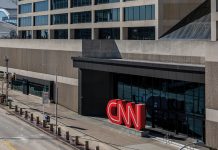
 Claire Suddath in Bloomberg Businessweek on Coke’s sales and health concerns
Claire Suddath in Bloomberg Businessweek on Coke’s sales and health concerns
Newsflash: Sugary soda makes you fat. Plus, aspartame, the sweetener in diet soft drinks, is a scary, unknown abomination (or so says the Internet rumor mill). You probably didn’t need Claire Suddath of Bloomberg Businessweek to tell you that these facts, along with the explosion of drink options, has finally cut into Coca-Cola’s bottom line, but it’s always fascinating to get behind-the-soda-fountain glimpse of one of Atlanta’s most renowned and secretive institutions. One shocking takeaway: The company’s campaign of labeling bottles with common names of American teens is actually working:
In the last three months, sales of Coca-Cola have inched up 1 percent in North America.
More striking than any stat within the story is the illustration of a “big-boned” Coke bottle by Justin Metz on the cover.
Read: Coke Confronts Its Big Fat Problem
James Hohmann for Politico on the leaked Michelle Nunn memos
Georgia Democratic Senate candidate Michelle Nunn got some unwanted headlines when a series of internal memos laying out strategy was leaked to the press. Politico’s James Hohmann had the best Cliff’s Notes on the embarrassment contained therein. Our favorites:
Targeting wealthy LGBTs: The campaign identifies an “opportunity” in the lesbian, gay, bisexual and transgender community — noting that they have deep pockets. “Michelle’s positions on gay marriage and the [Human Rights Campaign] endorsement provide a huge opportunity for mobilizing this community and their substantial resources,” says the memo on affinity groups.
And
Getting out in front of negative media stories: “Getting research hits killed” is described as one of the key jobs of any campaign-communications team. Political reporters know that press secretaries sees their job as working the referee, but it’s something else to see this written on paper: “Part of the communications department’s job (in conjunction with research) is to leverage relationships and find the material to push back against negative research hits. Often we will have fair warning and can work to kill or muddy the story. Sometimes we will get little to no heads up and will be forced to publicly respond to the attack or story.”
Oops.
Read: The Michelle Nunn memos: 10 key passages
Matt Garbett for Creative Loafing on Atlanta’s “world-class” status
The scribes at Creative Loafing invited another guest contributor to point out inconvenient truths about the city. Contributor Matt Garbett writes, and effectively argues, that Atlanta is (gulp) “Not a world-class city.” For instance, the new Falcons stadium:
So we build a “world-class” stadium, learning nothing from the mistakes of the past, further disconnecting entire neighborhoods from the rest of the city, and doing nothing to reduce the sea of parking that prevents the neighborhoods from becoming vibrant. Any project that requires $30 million to mitigate the impact on surrounding neighborhoods is not creating a world-class city.
Read: Atlanta’s not a world-class city
Mike Tierney for the New York Times on the demolition of Friendship Baptist church
Speaking of the new downtown stadium, the New York Times’ Mike Tierney offers a front-pew view of the last days of Friendship Baptist Church before it knelt to Arthur Blanks’ wrecking ball. In so doing, Tierney pokes at our city’s disregard for its past. He opens:
Proud of the racial harmony achieved in turbulent times, Atlanta has long promoted itself as the city too busy to hate. But it is also known for showing little love toward historical and significant old buildings — the city too busy to remember — with no hesitation to tear them down.
So it was perhaps not surprising that Friendship Baptist, the city’s oldest African-American Baptist church, founded by former slaves with help from whites and still thriving, found itself in the path of bulldozers that will raze the Georgia Dome as its replacement rises next door. The church is to be taken down, as early as Monday, 152 years after it was established.
Read: In Path of Falcons’ New Stadium, Atlanta Church Awaits Demolition
Thomas Lake for Sports Illustrated on the Braves move to Cobb County
While downtown residents are dealing with arrival of a new football stadium, in-towners are also starting to face the departure of its baseball team. Sports Illustrated writer (and Atlanta mag alum) Thomas Lake laments:
What will I say when (my son) asks me why the team moved? I could tell him Turner Field was too old, but that would be a lie. It opened for baseball just 17 years ago. The Braves claim it needs $150 million worth of improvements, but it still looks new, inside and out.
I could say the Braves did what the people of metro Atlanta wanted, but that would be pure speculation. Team officials made sure the public had no chance to sway their decision. They formed their plans in secret and announced them as if they’d been written in stone. “If it had leaked out,” team president John Schuerholz said, “this deal would not have gotten done.”
I could tell him part of the Braves’ argument against Turner Field is its supposed “lack of consistent mass-transit options,” but that would be disingenuous. You can reach the current stadium by train and an easy walk, as we do, or by train and a short ride on a shuttle bus, as many others do. The new stadium will open in a county where the MARTA line has never gone. In essence, the Braves are saying, “This river’s too shallow. Let’s move to the desert!”
Read: For Braves fans, move to Cobb County is major loss for Atlanta residents














